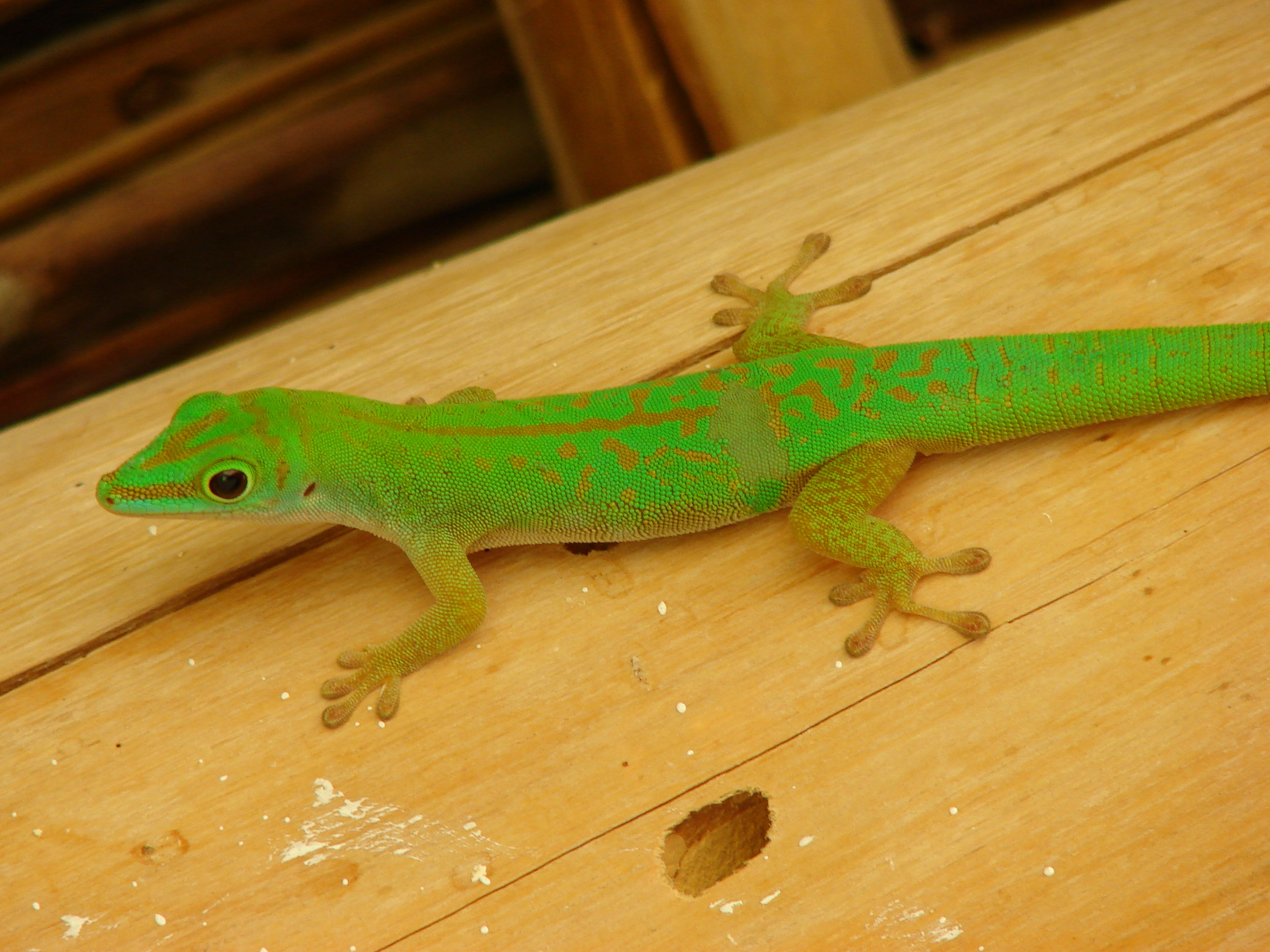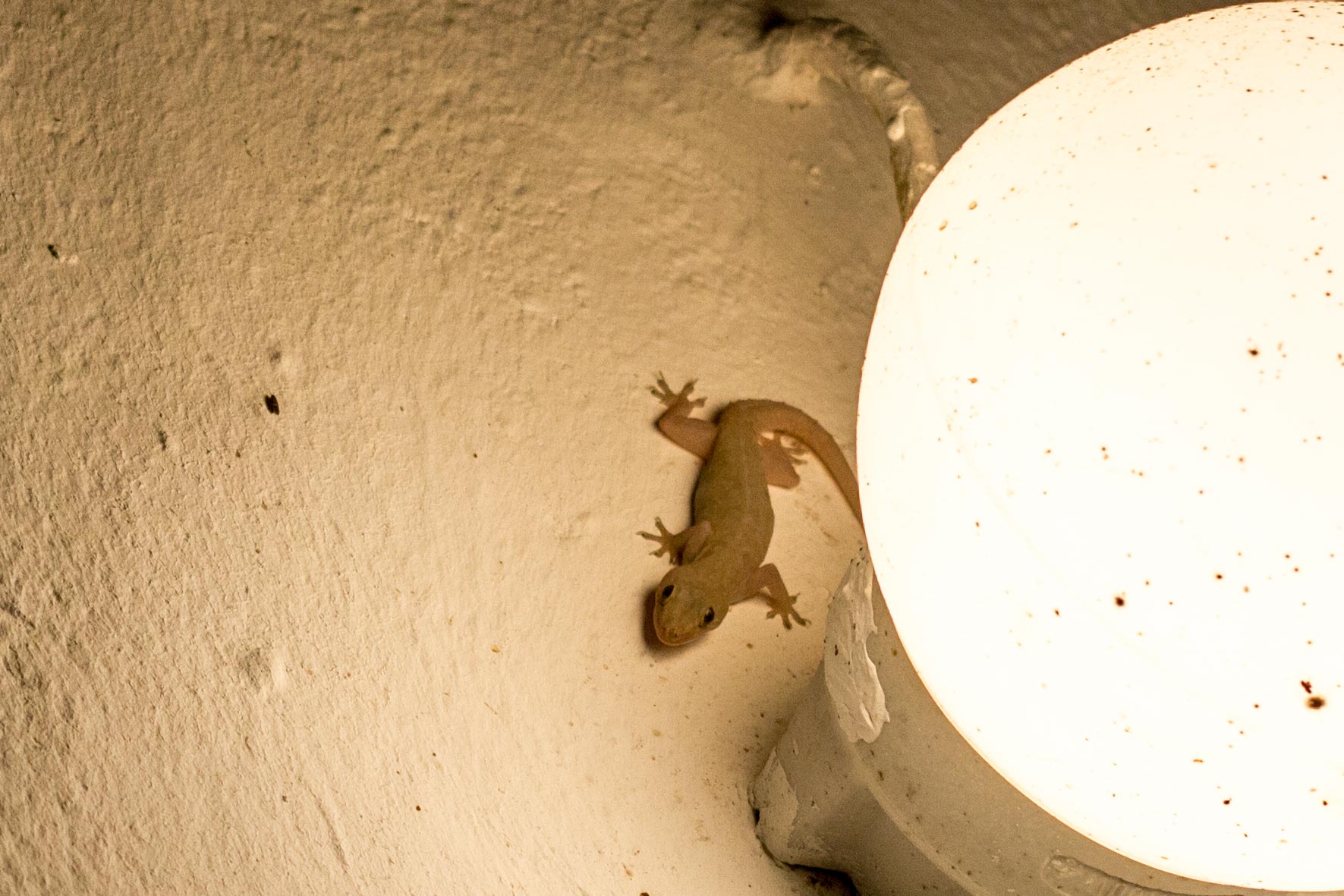Welcome house guests
Words by: Kerryn Bullock
Those who suffer from ophidiophobia (fear of snakes) would find solace on snake-free D’Arros Island. And though the island may lack snakes, it does possess other kinds of reptiles. There are, for example, the larger and more obvious species like the giant tortoise that has been discussed before and sea turtles that lay their eggs on the beaches. But there are also smaller, scaly and charismatic reptiles that even share my room with me. These are the skinks and geckos.
Here you will find the Seychelles skink Mabuya sechellensis. It is a slim, diurnal skink that can grow up to 23 centimetres long and has a distinctive black stripe down its side. (Image 1) These skinks are proficient climbers and I have often seen them scurry quickly up a vertical coconut tree stem. When doing forestry rehabilitation work, we are always stalked by a number of skinks that munch happily on the insects we disturb while pulling out small coconut plants or feast on the mosquitoes that swarm relentlessly around us. The skinks on D’Arros are rather timid and won’t let us get close to them before they run away. Their behaviour is very different from that of the skinks on St Joseph’s Atoll, which are happy to crawl on us, observe the view from a shoulder or nibble a finger if we let them.
The green or day gecko Phelsuma astriata is by far the most beautiful and striking of the smaller reptiles. This gecko is also diurnal and, as its name indicates, is bright green in colour (Image 2) with a reddish chevron on its head between the eyes and two narrow transverse red bars on the neck. Irregular reddish lines or spots are scattered over its back and tail. These markings camouflage the gecko really well in nature when it’s on a green leaf or stem, but on the white walls of my room they stick out like sore thumbs. Three geckos of various sizes live in my room: a baby that I always see on the floor of my bathroom; a medium-sized one that lives in my cupboard; and the largest one, which lives on the wall next to my bed. They make for great pets as they are quiet, clean and they eat bothersome insects.
Then the last small reptile that I share my house with comes out at night. It is the common house gecko Hemidactylus frenatus, which has a remarkable ability to climb vertical surfaces and even hang upside down on ceilings, thanks to specially adapted pads on the underside of its toes that enable it to grip. These geckos congregate around shining lights at night, feeding on insects that are attracted to the light. They have learnt to wait in ambush and pick out insects that look tasty. The common house gecko can grow to about 13 centimetres long and its back varies in colour from greyish to pink-brown, with darker speckles scattered along it. (Image 3) It is a very vocal species, filling the night with lovely chirping sounds.


